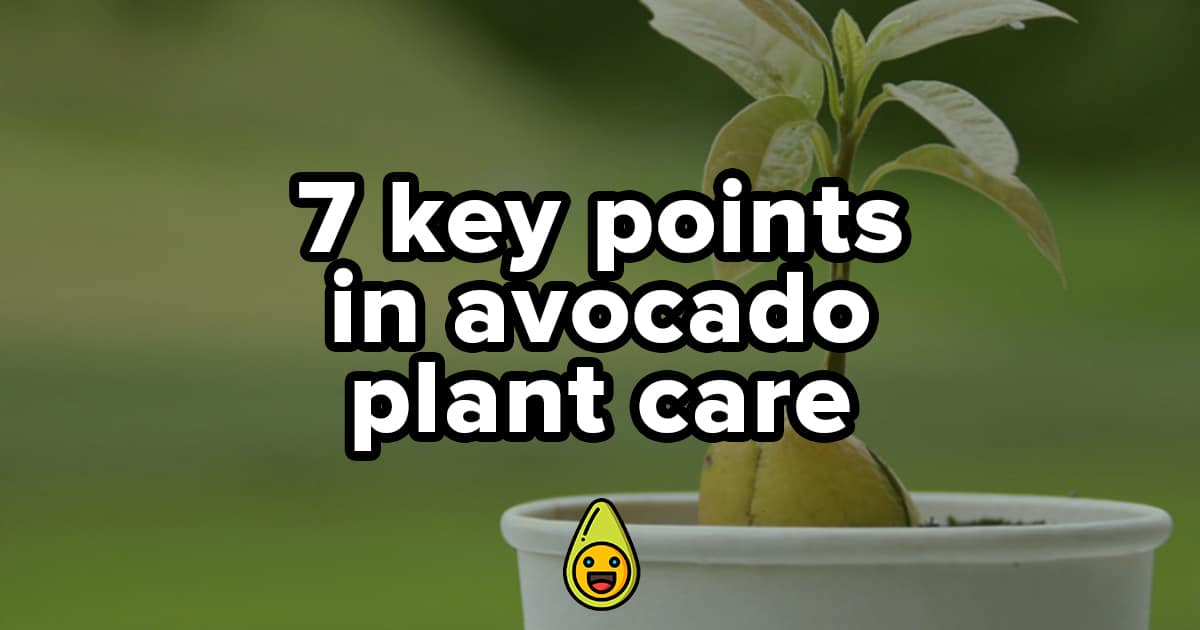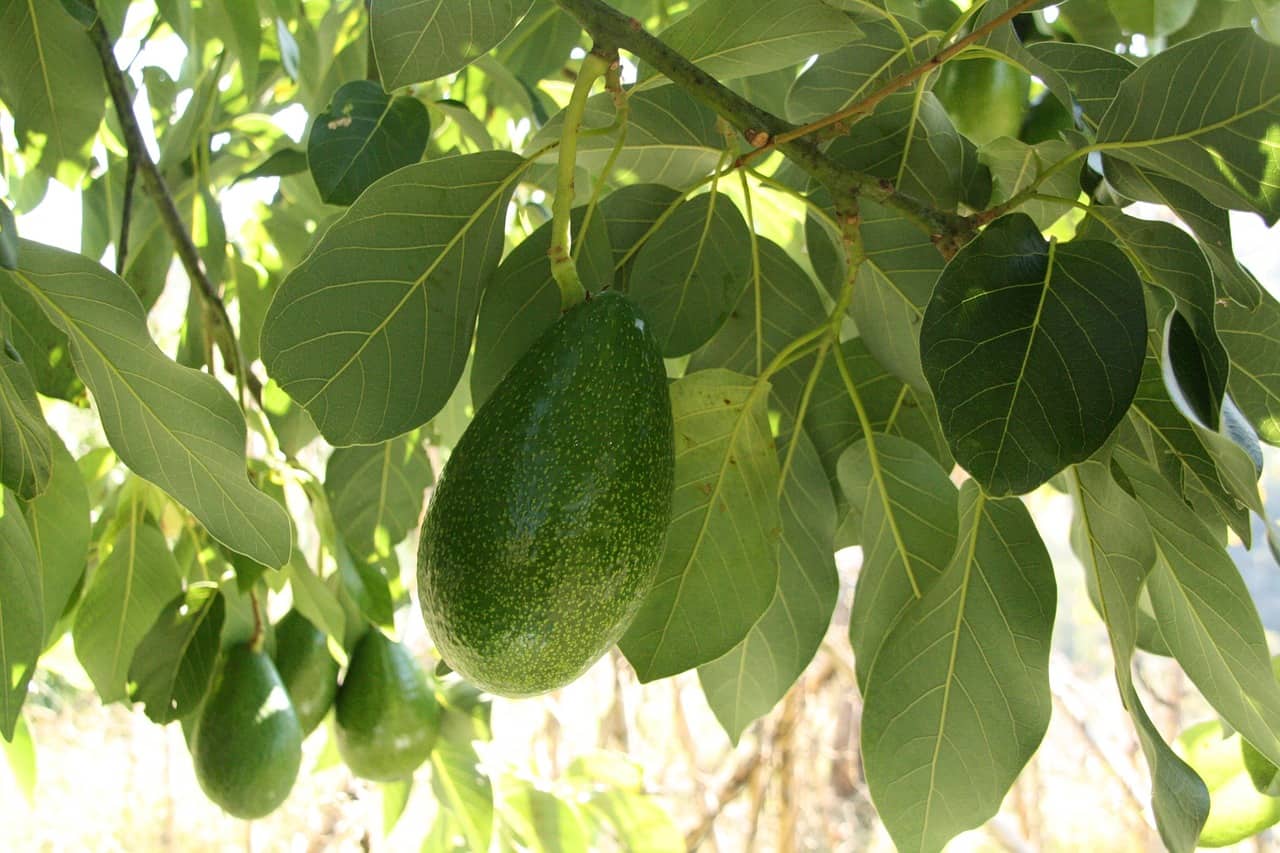In recent years avocados have gotten a bad rap for being the choice food of semi-pretentious millennials who like to flaunt their healthy eating habits into others’ faces. This has unfortunately slightly overshadowed the reality that they are potentially an incredibly delicious and nutritious fruit that can be incorporated in a wide variety of diets. In reality, avocado plant care is tedious work which requires a lot of knowledge.
Table of Contents
Introduction
Avocados are great. They are like nature’s cheat code for health and enjoyment, but for some people just buying avocados at the store and eating them just does not cut it. No, some people want to grow their own avocado trees, either for aesthetics (as they can get quite pretty) or purely for harvest purposes.
If you are one of these people, then you will appreciate this article we have prepared for you. Its focus talks about the fundamentals of avocado tree care and gives you some key points tips to keep in mind in order to keep your plant as healthy as can be.
Naturally, everything depends on context, so some of these tips will be only for a specific situation, such as if you are growing the avocado outside in a subtropical environment, or inside, grafted onto a rootstock.
So, with the introduction out of the way, let us get to the meat of the article with the first tip:
Mind the climate
Avocados are plants that grow in a subtropical, warm climate (think of climates present in areas such as the coast of California for a better idea of this). This essentially makes them quite vulnerable plants that cannot tolerate harsh weather. Therefore, it is imperative that, if you have decided to grow your avocado plants outside, you make sure the climate is appropriate.
You need not worry about this particular aspect of avocado tree care if you are growing your avocados inside or in an otherwise controlled environment, of course.

Know which locations and soil work best
One of the key things with any plant you are growing is knowing where exactly to place it for optimal growth and health. For an avocado tree, this means placing it in a spot where it will get plenty of sunlight. The soil should be fine and sandy and it should be able to provide excellent drainage. Avoid heavy, clay soils because they are ill-suited for avocado trees.
Also, pick a spot that is protected from heavy winds as you do not want your fruit to drop or the plant’s leaves to fall off. As we have mentioned before: the avocado is not the sturdiest of plants.
Of course, like our first tip, this only applies if you are placing your avocado tree somewhere outside.
Be careful with the manual care you give it
You also need to take care how you handle your tree and take care of it in a more practical sense. For example, when planting it, it is important to gently ease the tree into the hole because the root ball is rather fragile. You also should avoid adding manure because the salt and ammonia can damage the roots and leaves.
After the tree is planted, it should be watered deeply and regularly (but always be allowed to dry slightly before watering again). You can mulch trees with three to four inches of coarse wood chips in order to conserve moisture, always taking care to leave a few inches between the mulch and the tree trunk.

When it comes to fertilizing, some experts do not necessarily advise fertilizing your avocado tree in the first year, and after that, a balanced citrus tree fertilizer should do the trick (provided you follow the instructions properly).
The final point in this category relates to pruning, and you should only prune your avocado tree to shape it and control its size. Do not over-prune it, particularly when it is producing fruit. That said, you can remove dead branches whenever you want.
Know how to handle avocados in a cooler climate
Above we have stated that the avocado tree is a fragile plant that demands care and cannot handle harsh environments. Therefore, a natural conclusion that quality avocado tree care is difficult or impossible to accomplish in cooler climates, but this is not the case, in fact.
One thing that you can do is grow a Wurz, which is basically a Little Cado tree, in a container that can be transported easily. You can then move it indoors during the winter to protect it from the elements. While it is indoors, place it next to a south-facing window so that it can get lots of sunlight. Of course, once the temperatures go up again, you can safely place it back outside (provided the weather is not violent).
Keep in mind that even this little avocado tree will eventually grow to be about ten feet tall (sometimes more), so it is most likely only a temporary arrangement.
Be aware of the basics of indoor avocado plant care
One great option if you are opting for a container and the indoor variety of avocado tree is to purchase a dwarf tree that has been grafted into a rootstock. The stock itself increases the best traits of the plant, making it stronger and less vulnerable to environmental influences.
Another important thing which we have failed to mention before is the benefit of using a stake to keep the plant’s main stem straight and firm. As the tree outgrows its pot, make sure to transplant it into a more appropriate one.
When it comes to indoor avocado plant care, it is important to also fertilize it with water-soluble fertilizer monthly and turn the tree frequently as this promotes even growth. Fertilization with fish emulsion is also acceptable every month for the first year.
Take care when watering
Although we have already mentioned some details in regard to watering avocado trees, it is worth going more in-depth here as it is one of the key elements when it comes to avocado plant care.
As we have already mentioned, it is best to use slow and deep watering when it comes to avocados. We have also mentioned that similarly to citrus trees, they prefer to slightly dry out in between. Make sure to let the water soak down to the roots, but be careful not to over water as avocados are susceptible to root rot.

Also, always keep in mind the fragility of avocado trees. It is not drought tolerant, and you might need to increase the watering to twice a week during periods of very dry weather. Conversely, during spring and fall, every two weeks is typically enough to satisfy, and in winter you can lower this further to once a month. Of course, all of this is assuming you are growing your tree outdoors.
Because they are so fragile, improper watering is one of the main causes of problems with avocado plants and as such it is important to get this aspect of avocado plant care right.
Finally, a good way to make sure your avocado gets good, deep water delivery while at the same time not leaving it in a patch of soggy ground is to use a drip hose. Leaf yellowing will let you know if you have over watered your avocado plant.
Do some research and figure out the optimal way to fertilize it
Proper fertilization is such an important aspect of avocado plant care, both indoor and outdoor, and therefore it is worth researching in depth to make sure you are not harming your tree in any way.
When planting the tree itself you will want a lot of organic matter in the soil anyway. When it comes to fertilization, be sure to know the correct time of the year when you should fertilize it. The recommended time span is from February through September.
As for the type of fertilizer, it is recommended to spread out ammonium sulfate applications throughout this period. In the first year after you have planted your avocado tree, a good safe amount to apply is half a cup, which would eventually increase to a full cup. As the tree reaches two years of age, you can increase this to two cups each month.
Overview of Basics
Now that we have given you some key points for avocado plant care, we would like to make an overview of some of their basic implications and try to come up with a general mindset which you can adopt while caring for your avocado plant.
The first thing to keep in mind, and something which has been running like a thread throughout this entire article, is that the avocado is essentially a fragile and vulnerable plant. Used to subtropical climates, it cannot hold its own against storms, heavy rain, or other types of aggressive weather. Therefore, it is essential that you keep it in an environment where the climate is warm and nurturing. Alternatively, you can grow it as an indoor plant but do not expect fruit anytime soon and even then do not expect the same quality of fruit as that which grows on outdoor varieties.
Secondly, keep in mind that you yourself can do a lot of damage to your avocado plant by overwatering, over-pruning, or even over-fertilizing. As such, it is important to do your research and follow it closely in order to make sure that you give your avocado plant just the right amount of care, not too little but also not too much. Your guiding principle should be to do no harm.
And thirdly, you should take care to plant it properly as that will give a solid foundation for all your future avocado plant care.
Conclusion
The main point of this guide is to give you some key points relating to avocado plant care. We hope that you have gained some information here which will help you in your future avocado growing exploits.
That being said, however, we would like to take this time to tell you one final thing which you will find useful, and that is attitude. More specifically, when taking care of your avocado tree, you should do it with love and care. A lot of the time, it is possible that just by approaching the task that way you will know how to do some things.
Of course, proper avocado plant care requires a combination of both attitude and technique, so as long as you are aware of the correct way to do something, and apply that knowledge with love, then you and your avocado should be fine.









